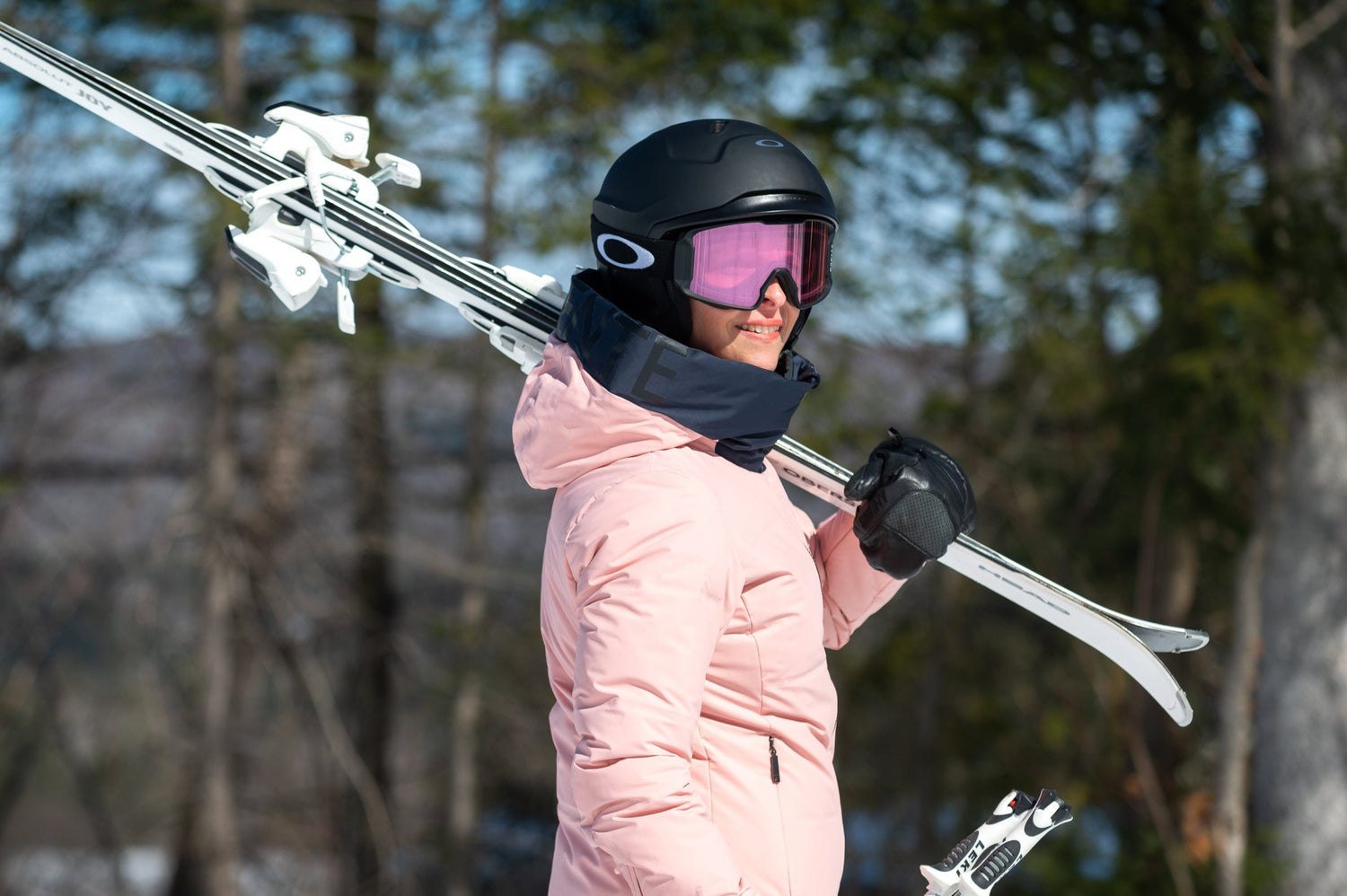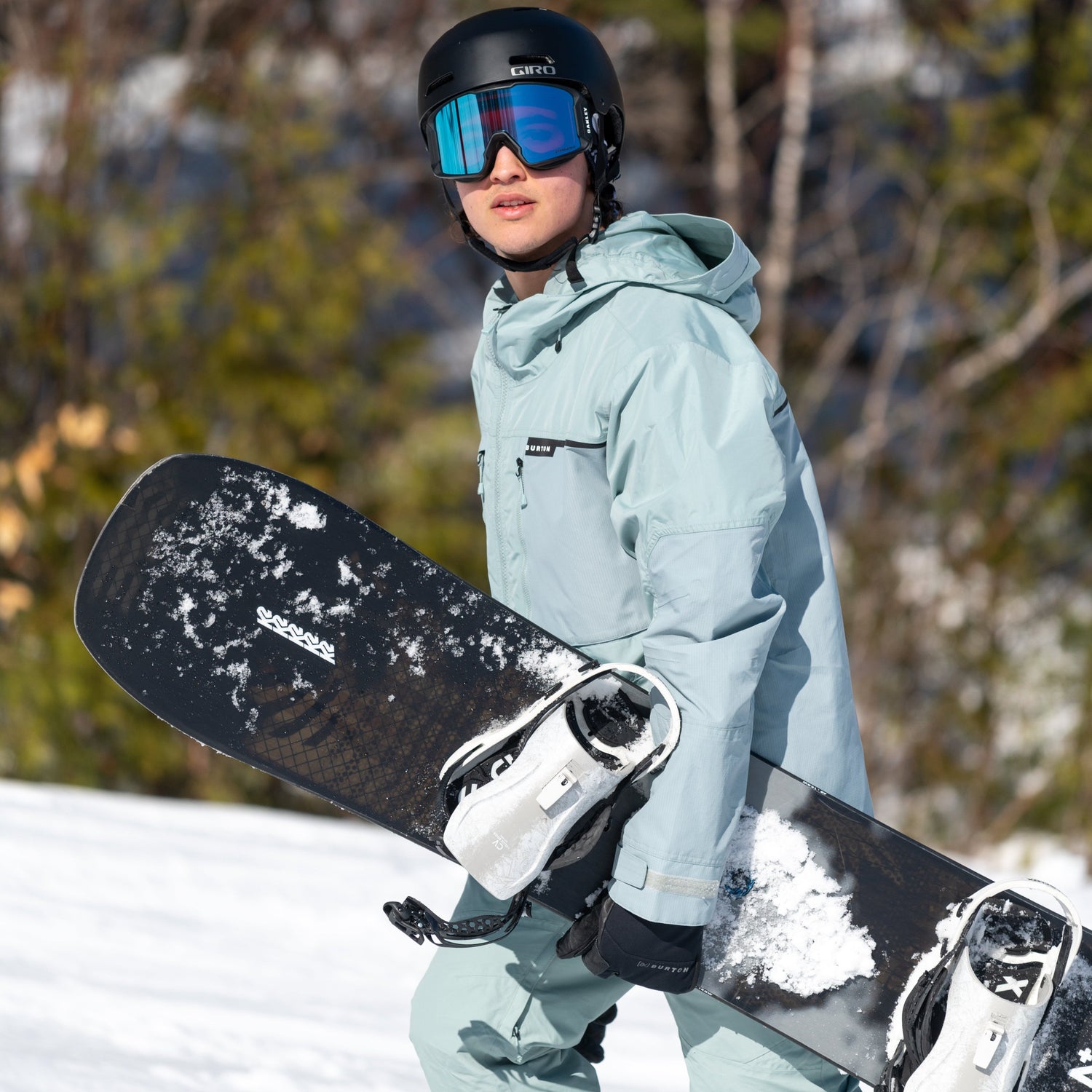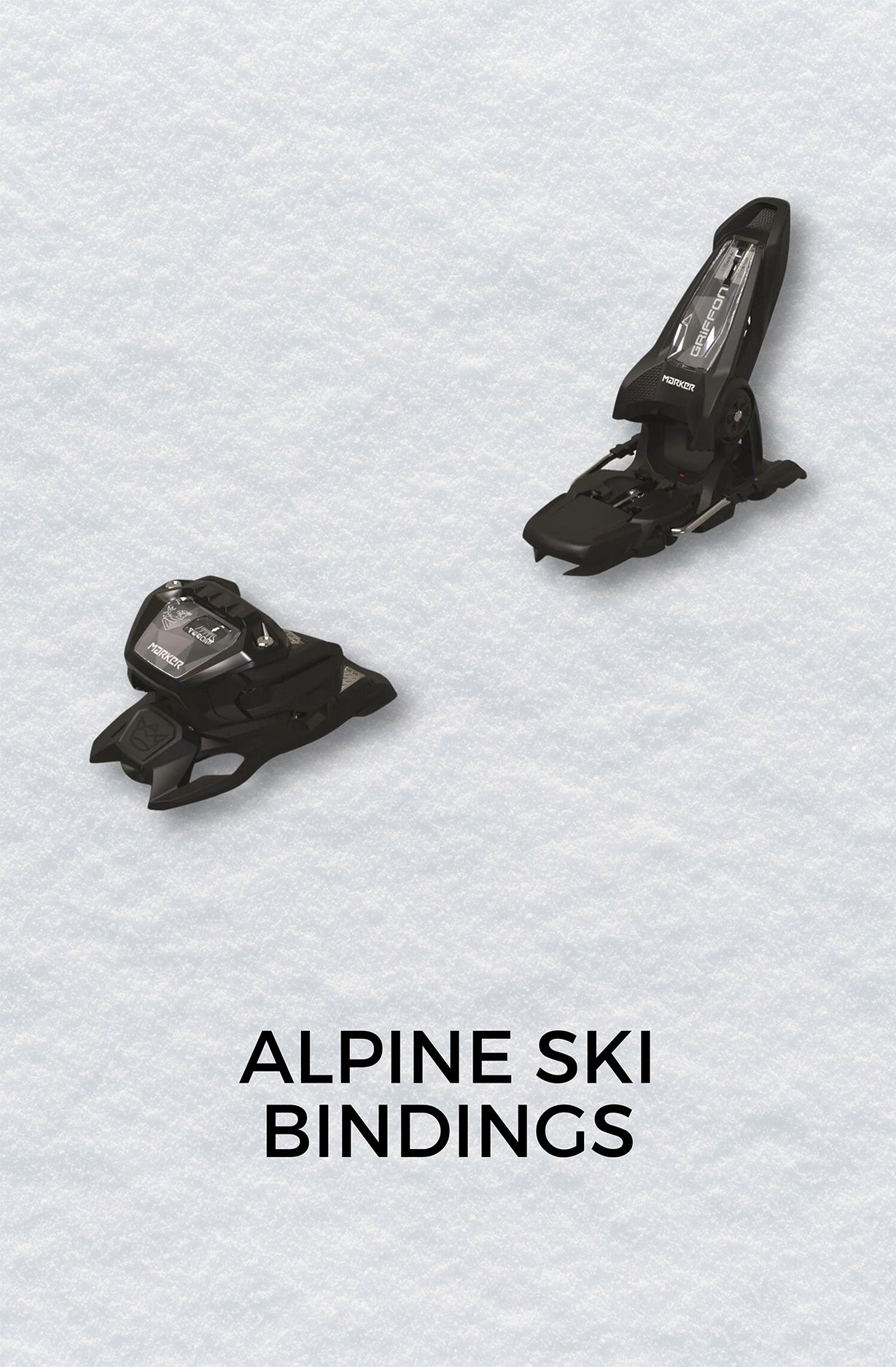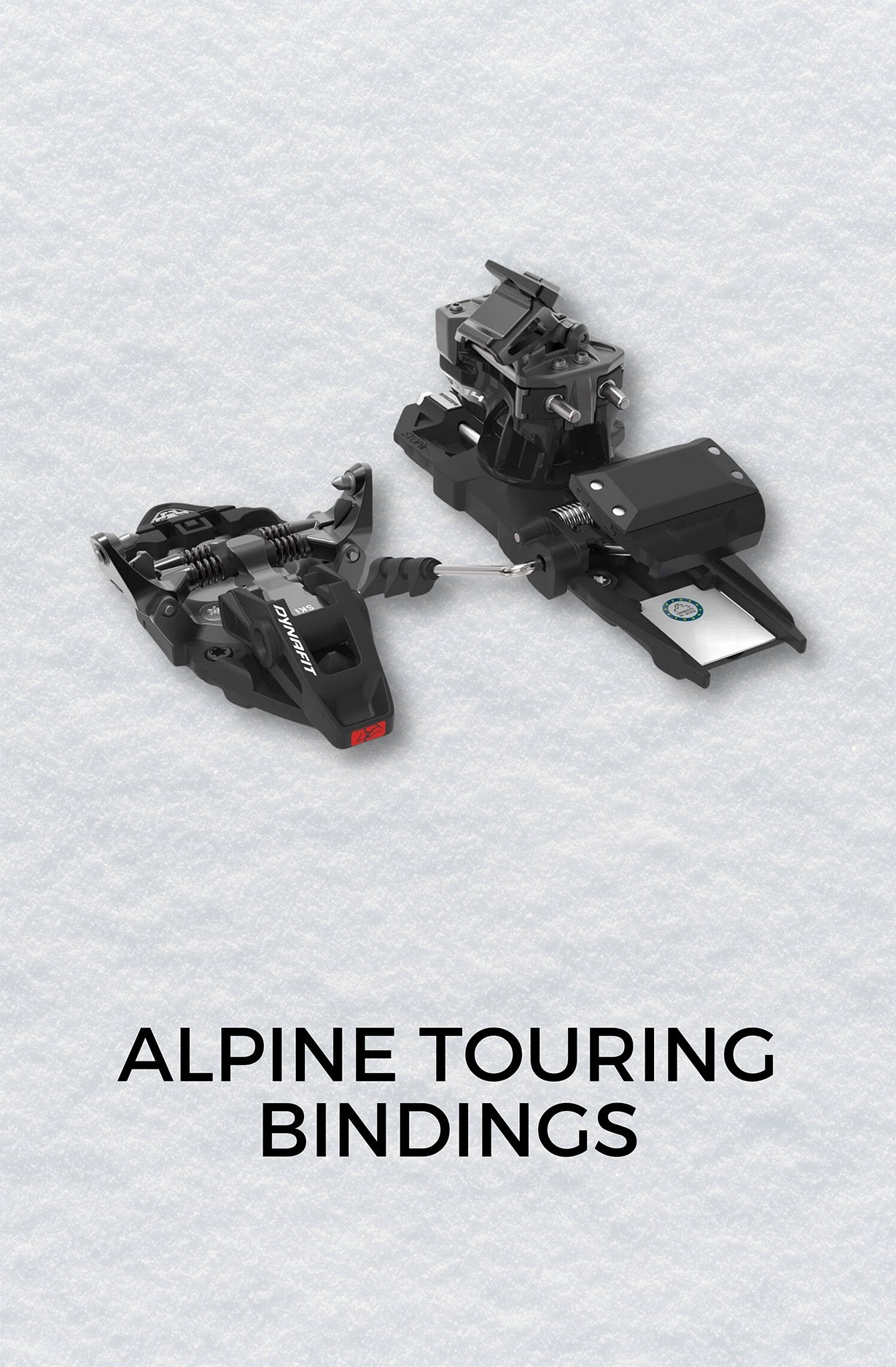Alpine Ski Gear
Types of Downhill Skis
There are many types of alpine skis that are designed to be used on different kinds of terrain. They’re divided into five main families: piste skis (of which carving is a major subcategory), all-mountain skis, freeride skis, freestyle skis and touring skis. Each style offers models for all skill and experience levels. Certain styles can sometimes be combined for more versatile skis.
Alpine skis are categorized based on their flex, construction and waist width. To learn everything you need to know about the various types of skis, see our article Types of Alpine Skis: How to Make Your Choice.
Many sizes of alpine skis are available. Depending on the type selected, the size to choose varies based on the skier’s height. Check out our chart to find out how to choose your alpine ski size.
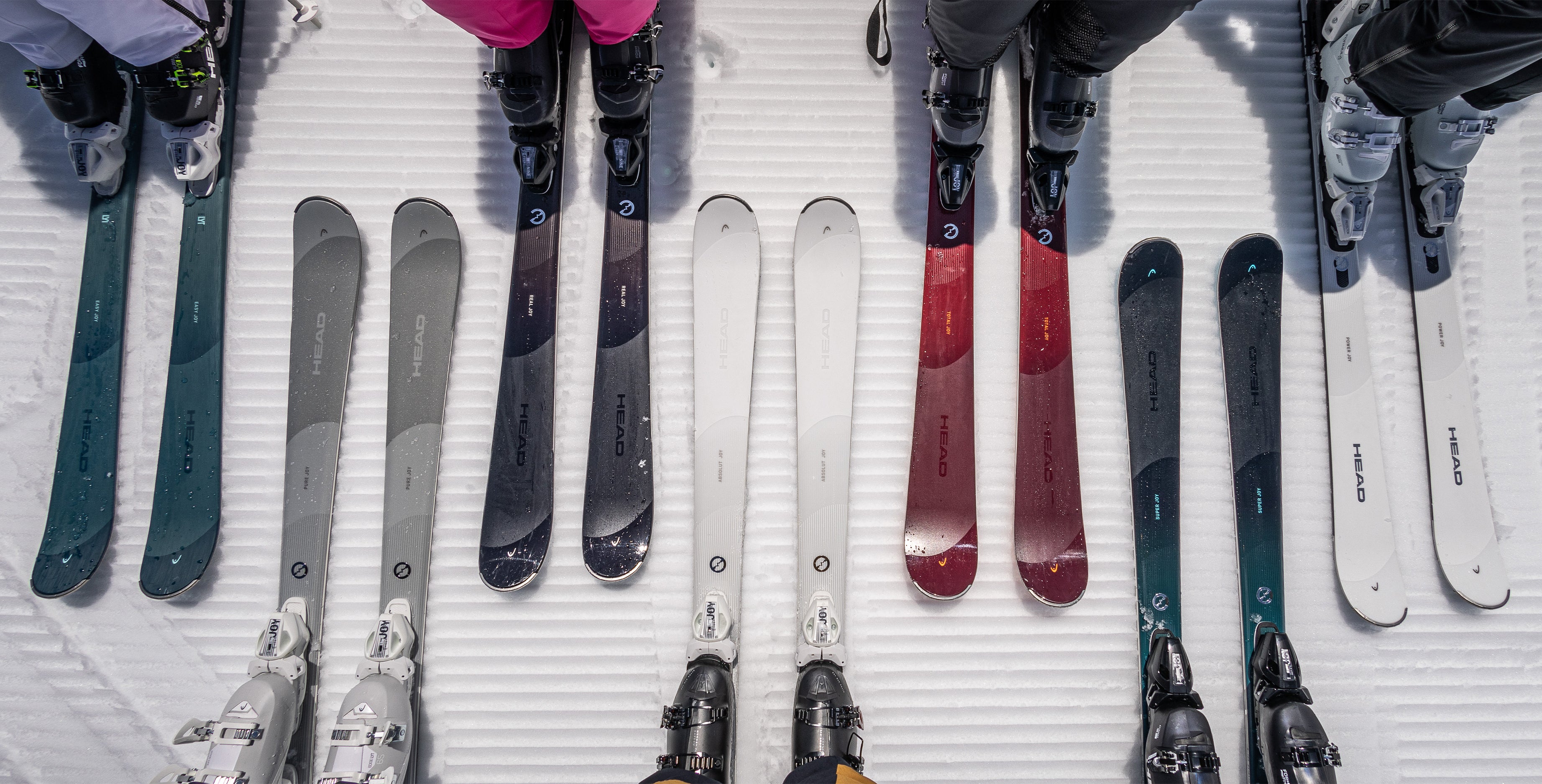
Types of Ski Boots
Ski boots are your most important piece of equipment. Poorly fitting boots don’t perform as well. Alpine ski boots are characterized by their flex index and width. The boots’ flex caters to different types of skiers and skill levels. The width adapts to various foot shapes for the best possible fit. To learn everything you need to know about the various types of alpine ski boots, see our article How to Choose Alpine Ski Boots.
Ski Bindings
We often forget how important they are, but alpine ski bindings play an essential role in your ski equipment. Ski bindings keep your boots in place on the skis and release them if you fall. They’re composed of a toe piece, a heel piece and brakes, which are sometimes included depending on the binding type.
Many models of alpine skis, such as piste and all-mountain skis, are sold with their bindings. However, freestyle, freeride and touring skis are sold flat—in other words, without bindings.
To choose ski bindings, you should focus on four criteria: most frequently skied terrain, ski boot model, ski width and DIN setting. Keep in mind that not all bindings are compatible with all ski boots.
- Alpine Ski Bindings
Designed for downhill skiing at resorts, these bindings are equipped with a toe piece, a separate heel piece and brakes. They also have an anti-friction device at the toe so the ski boots can slide out of the binding if you crash. Their elasticity also helps dampen vibrations and absorb shocks for increased stability and smooth skiing.
- Alpine Touring Bindings (Tech Bindings)
Alpine touring bindings feature a toe and heel piece with a metal pin system (aka pin tech) that’s only compatible with touring boots. The boots have a system of metal holes at the toes and heel where the pins fit in. This type of binding allows experienced backcountry skiers to enjoy lighter, high-performance gear. However, they don't offer the same elasticity or on-piste performance as alpine ski bindings.
- Hybrid Bindings
These highly versatile bindings have a touring toe piece with metal pins and a standard alpine ski binding heel piece. They can be used for both touring in the backcountry and downhill skiing at the resort. The combination of the metal pin toe piece and standard heel piece ensures efficient climbs and outstanding energy transfer during descents. However, they’re a bit heavier than pure touring bindings.
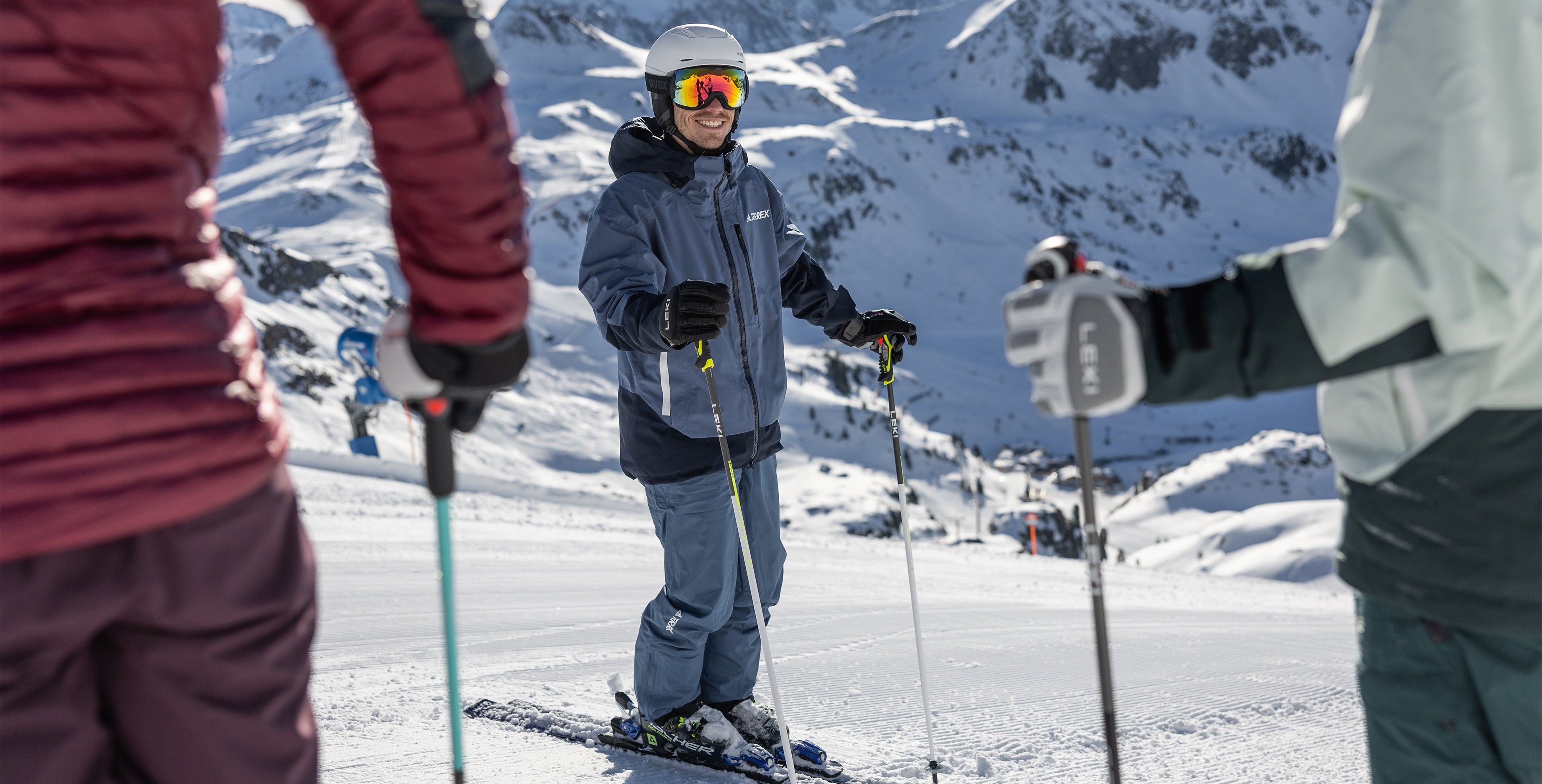
Alpine Ski Poles
Though not mandatory, ski poles are very useful, both on descents and flat terrain. They let you push yourself forward when moving about and enhance your stability in turns. They consist of a shaft, baskets, grips and wrist straps.
There are different styles of ski poles: piste and all-mountain, freeride and powder, freestyle, touring, and ski racing. To learn all about choosing ski poles for your skiing style, check out our article How to Choose Ski Poles.
Gear Maintenance
Alpine skis require proper maintenance to keep them performing well for as long as possible. Properly waxed, sharp equipment ensures confidence-boosting, fun descents, whatever the conditions. To learn all the secrets of ski tuning in our shop, read our article.
Would you like to get into alpine touring? We’ve also created a buyer’s guide for ski touring and splitboarding.
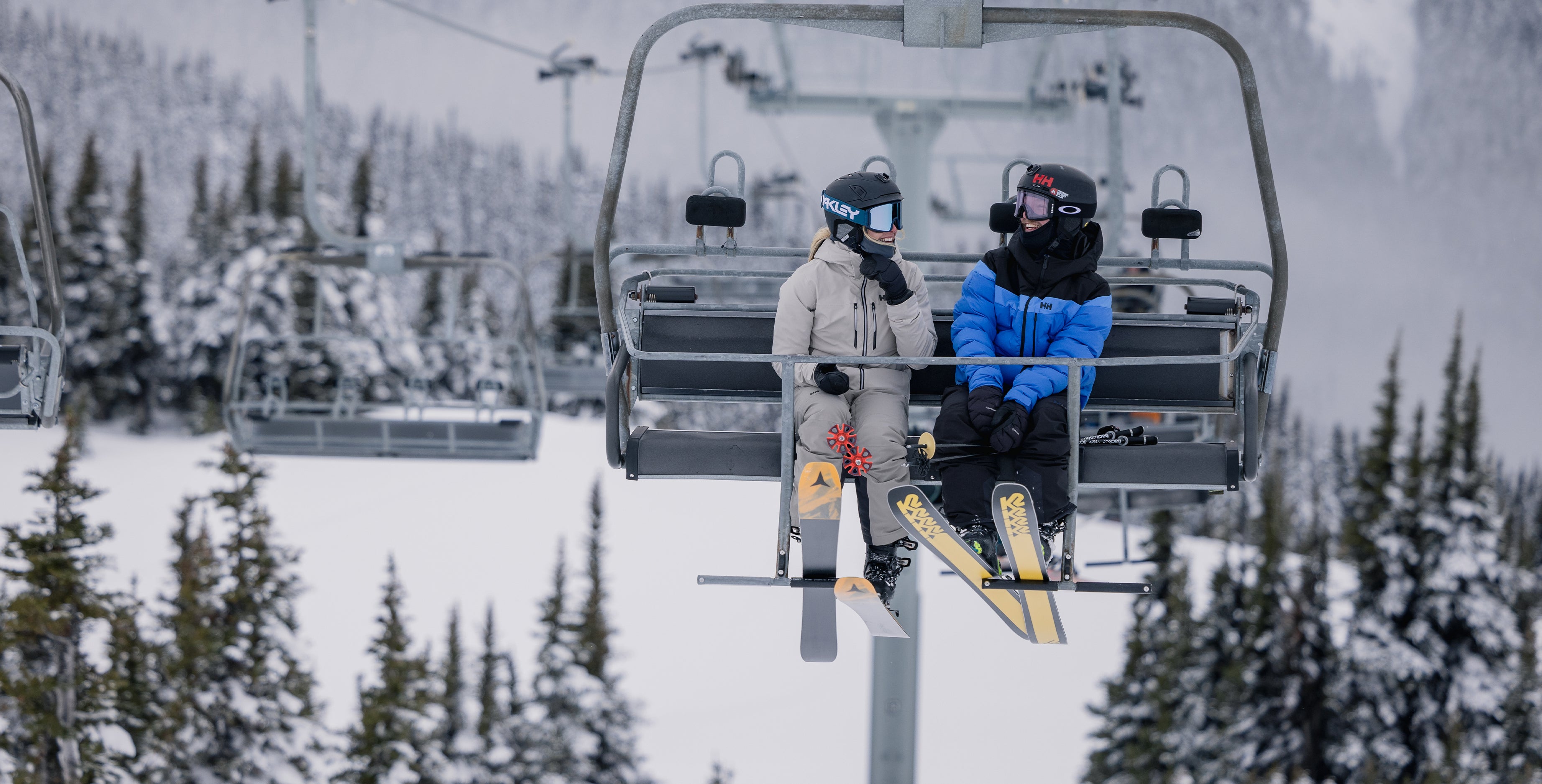
Alpine Ski Clothing
To make the most of your days out on the slopes in all weather conditions, wearing the right clothing makes all the difference. For downhill skiing at a resort, dressing in layers or wearing an insulated ski suit works well.
The layering system, as the name suggests, involves putting on several layers over each other—from the base layer to the outer layer—to trap heat and wick away moisture. This technique is more often used for touring, but it works perfectly well for downhill skiing. Insulated ski clothing is also very effective and does a good job retaining heat. It’s a matter of budget and personal preference. A layering system is more expensive, but the various layers can be used for other sports, such as hiking and cross-country skiing. For a better understanding of dressing in layers, check out our article.
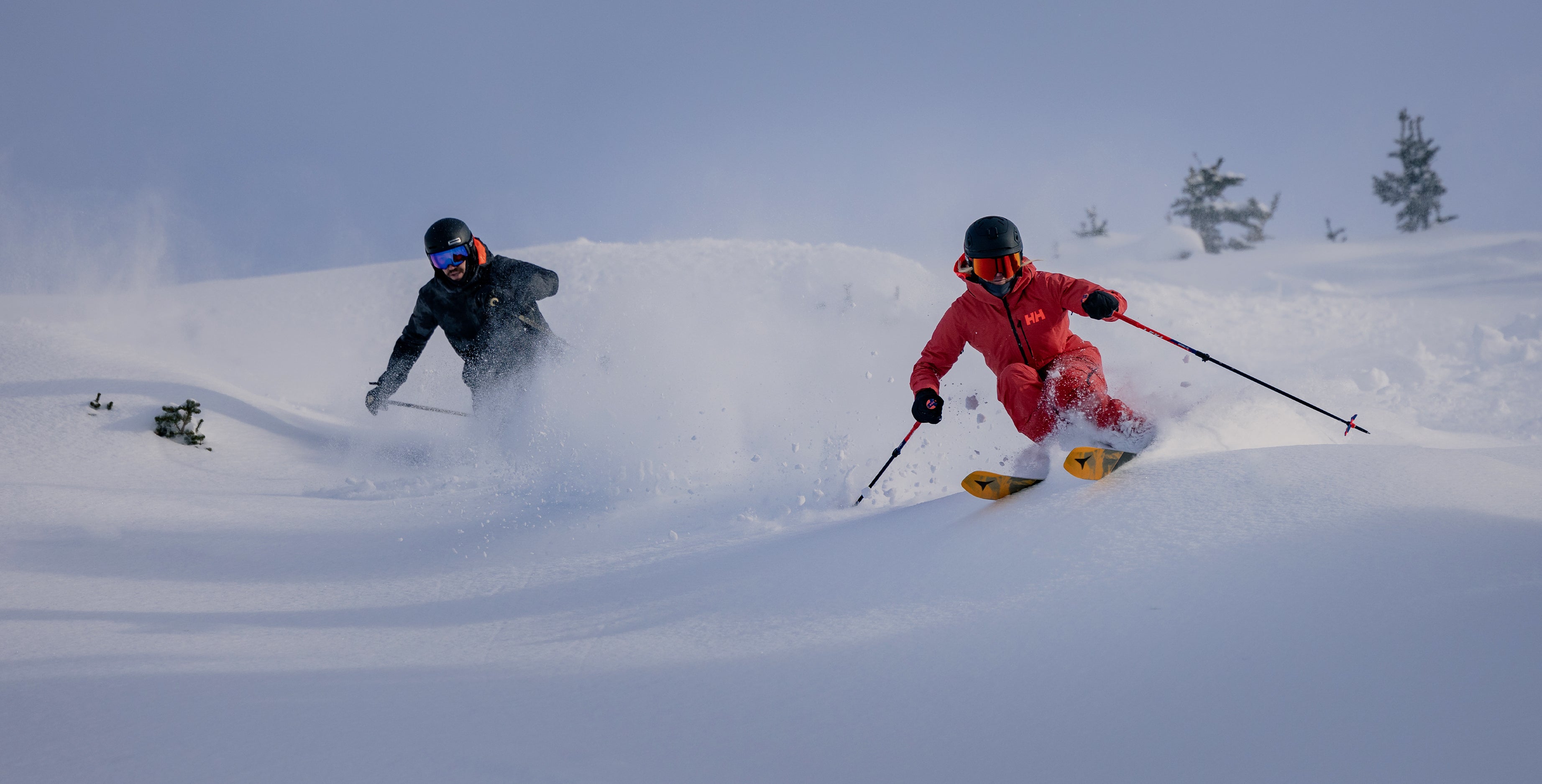
Ski Jackets
A ski jacket should be waterproof, breathable and well insulated, either with down or synthetic materials. It shouldn’t be too tight. This allows you to wear a base layer and a thin mid layer underneath it. In addition, check for features, such as zip pockets, an adjustable hood, vents, and various adjustments at the cuffs and hem. There are many different fits for ski jackets. The main thing is to be comfortable and make sure the insulation meets your needs.
Ski Pants
The same goes for ski pants. Waterproofing, breathability and insulation are essential. Features, such as vents, zip pockets and waist adjustment are worth looking for when shopping.
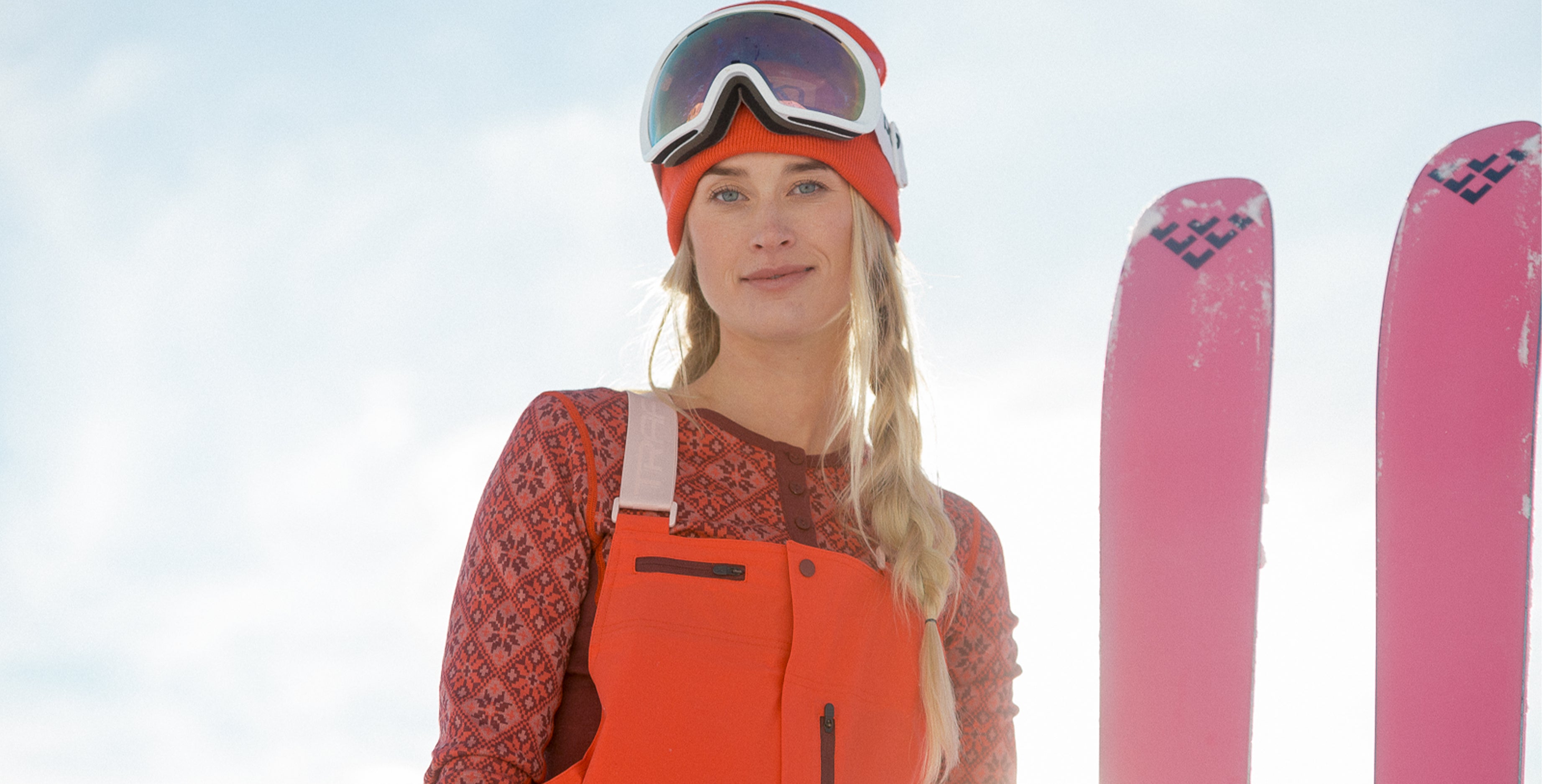
Base Layers
Base layers should be close-fitting and worn directly on the skin to keep you dry by wicking away moisture produced during exertion. Base layers are made of merino wool or synthetic materials. To make the right choice for you, read our article about base layers.
Mid Layers
For alpine skiing, the choice of a mid layer depends on your tolerance of the cold and the temperature outside. Some people who tend to get chilly go with insulated mid layers, while others choose a fleece jacket that’s thinner and retains warmth well. Keep in mind that alpine skiing is a high-intensity activity when going downhill, but it’s passive when you’re riding the chairlift. That’s usually when the cold sets in.
Ski Socks
Socks play a big role in trapping heat. Ski socks are available with various types of cushioning: ultralight, light, medium and targeted. Compression socks are also an option. Heated ski socks are another choice to consider and excellent allies for regulating temperature and activating blood circulation. They provide long-lasting comfort on the most frigid days. Do heated ski socks speak to you? Peruse our buyer’s guide.

Gloves and Mittens
Your extremities can get cold fast. Choosing the right gloves or mittens will optimize your comfort on the slopes. The choice of gloves and mittens is based on three components: insulation, a membrane and a liner glove. Insulation is made of synthetic materials, such as Primaloft® or down. The membranes vary from leather to Gore-Tex, depending on the product line. Liner gloves can be worn under a mitten for a bit more warmth.
For people who get cold easily, mittens are a better choice since the fingers are fully enveloped. But if you prefer gloves, heated ski gloves are a great option for a little extra warmth. For an in-depth look at heated ski socks, read our buyer’s guide.
Beanies
A beanie is a downhill skiing essential. If you’re wearing a helmet, go with a thin one. A balaclava can also be a great choice because it protects your face from the wind and cold. If you don’t wear a helmet, you’re free to select any hat you like. To find out how to dress properly for downhill ski, discover our article.

Ski Accessories
Ski Helmets
Wearing a helmet on the ski slopes is strongly recommended for safer descents. This protection is a must-have both on resort trails and in the backcountry. Ski helmets are made of hard plastic and foam. In addition, some models feature Mips technology that protects you from impacts created by the head’s rotational motions in the helmet during falls. Want to wear a ski helmet to complete your gear? Here are all our tips to make the right choice.
Ski Goggles
Ski goggles play a key role in your confidence on the slopes. A poor choice of lens tint for the brightness outside can quickly put you in a dangerous situation. Seeing clearly during a descent allows you to anticipate obstacles and see the terrain accurately. Goggles also protect your eyes from UV rays, wind and snowflakes. To better understand the types of lenses and their tints, see our article on ski goggles.
Boot Bags
To carry everything efficiently, a boot bag is a must! Boot bags can hold not only ski or snowboard boots but also clothing and accessories, such as your ski helmet. Our favourite? The Oberson boot bag has been the hands down favourite for many years!
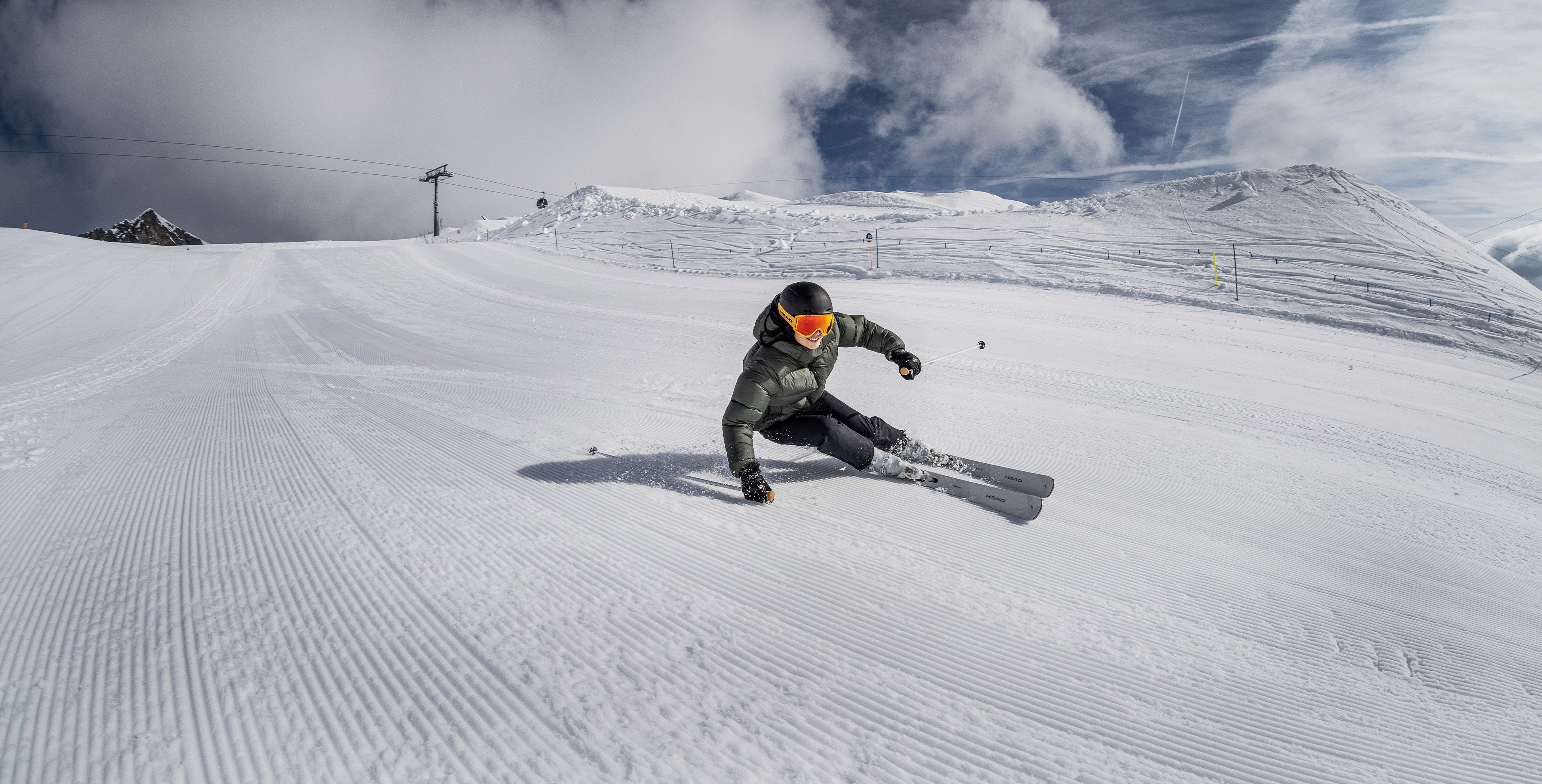
Ski Destinations
With its plethora of downhill ski resorts, Quebec has no reason to envy other provinces. Our mountains can accommodate all skill levels and offer panoramas that are well worth the detour. Looking for some inspiration for your first alpine ski outings? Explore our 13 favourite Quebec ski resorts.
And if you’re new to ski touring this year, check out 7 Places in Quebec to Start Alpine Touring.
